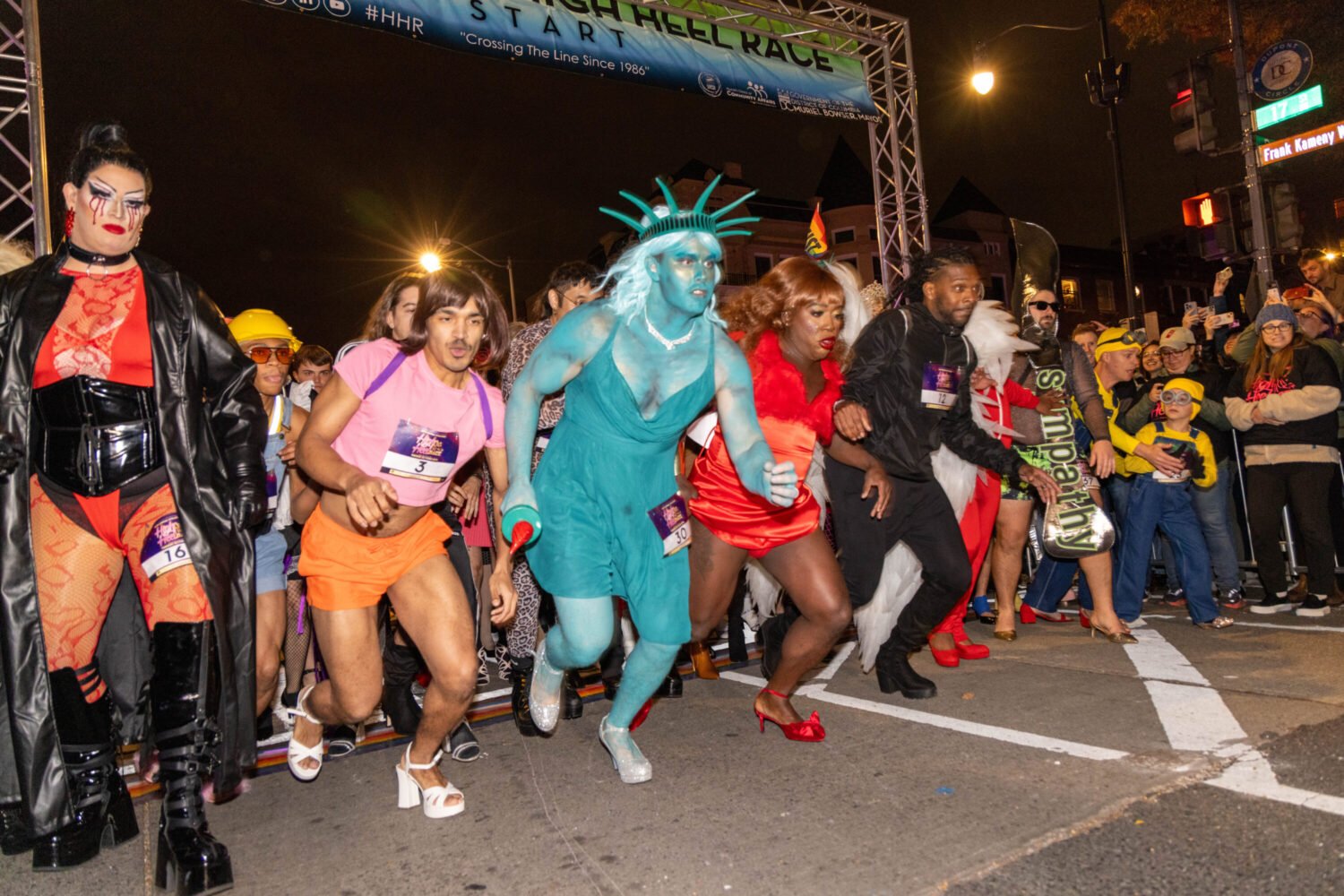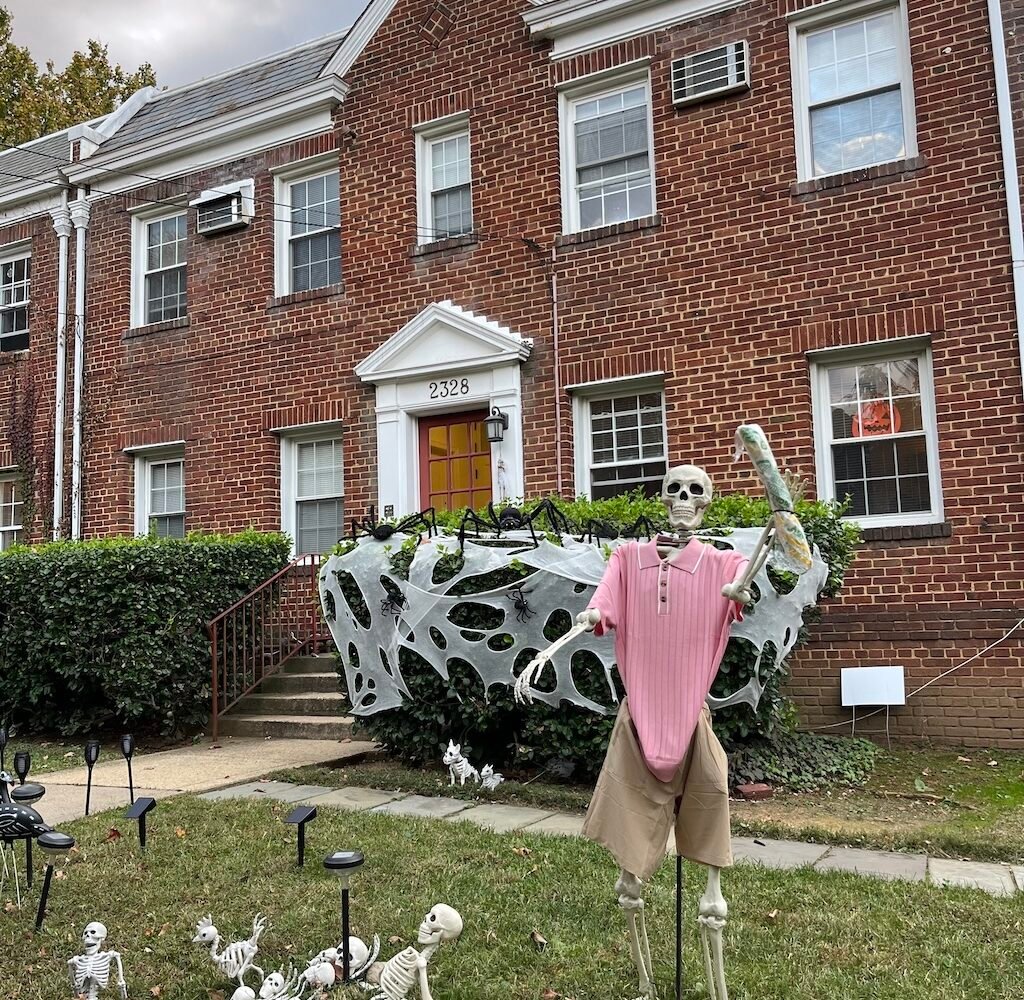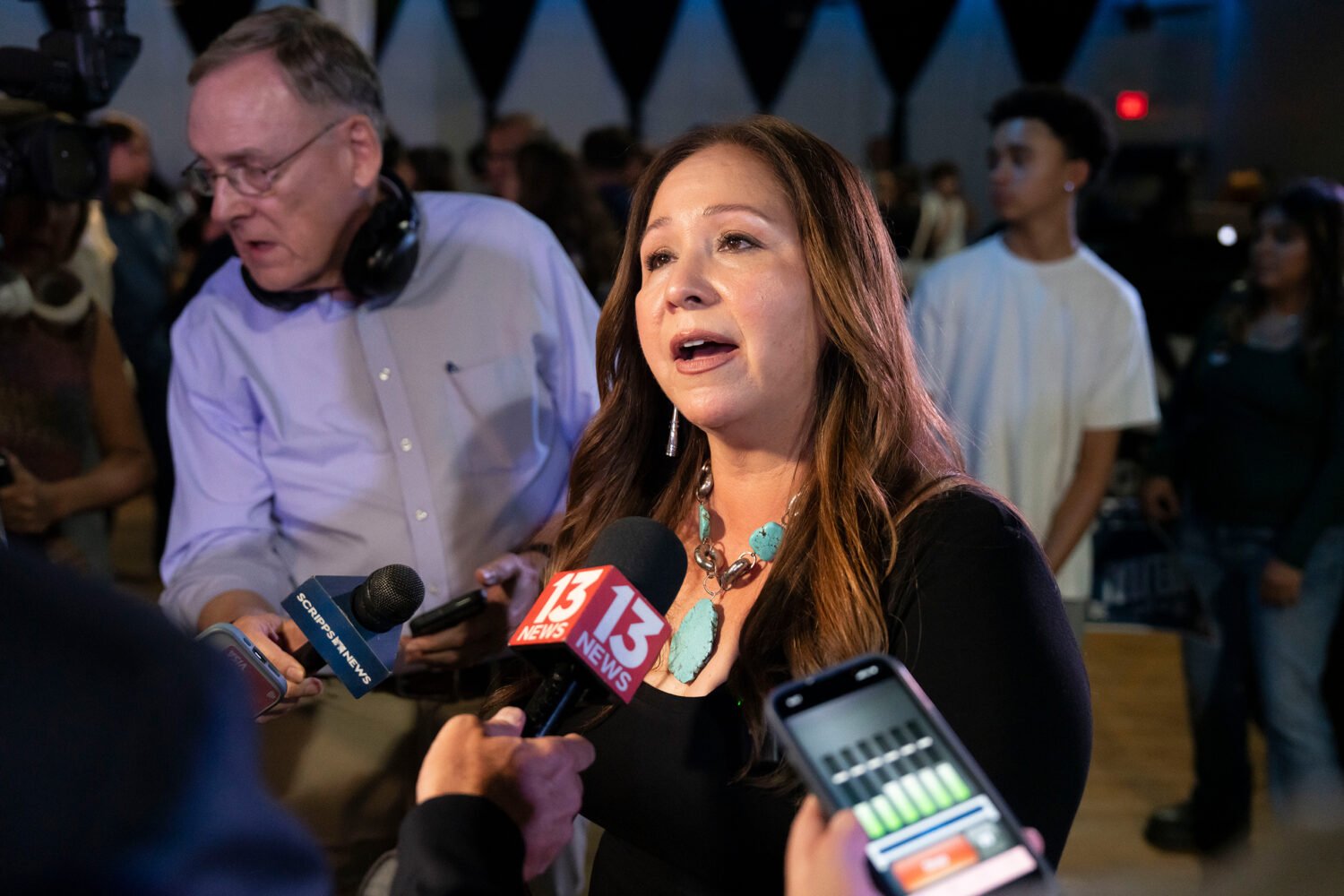→ Great Design Advice by the Hour
My husband and I had been living in our house in DC’s Columbia Heights two weeks when interior designer Celeste Davis arrived for a two-hour consultation. We were already desperate for help.
Before we moved, Eric and I had offered almost all of our furniture on Craigslist for free to anyone who would pick it up. The ad went live at 8:50 am on a Tuesday. By 9:30 that morning, everything was claimed—even our stained sofa and an Ikea armoire that had seen better days.
We were excited to cast off our old stuff and start from scratch. But our clean slate quickly started to seem overwhelming. We had bare white walls, no furniture, and lots of decisions to be made on furnishings, paint, window treatments, rugs, art, and more. Eric was itching to check things off of our to-do list and eager for a comfortable place to sit. I worried about making hasty purchases we’d regret. Professional help seemed the answer.
We couldn’t afford an interior designer’s full services, but some designers offer one-time consultations, for a few hundred dollars, that give you advice to get started. I thought this might help speed up our decorating, settle disagreements, and prevent expensive mistakes—though I wondered how much you could accomplish in a two-hour meeting.
I set up appointments with three designers who work in the style we like—a mix of contemporary and mid-century-modern furniture with a neutral palette. I chose them by looking at their Web sites—two have online portfolios—and by talking with them on the phone. All three seemed smart, friendly, and fun. If you’re going to bring someone into your home, I figured, it might as well be someone you like.
Two of the designers waived their fees because I was writing an article. We decided to focus on the first floor of our house, which has an open floor plan for the living room, dining room, and kitchen.
Celeste Davis, the first designer, brought her associate, Yvette Freeman, along to our appointment. We started by looking through pictures Eric and I had pulled from magazines and the Internet to give them a sense of our taste. We talked about how we plan to use the space—having friends over, lounging with books and magazines, and not making the TV the focal point.
Davis and Freeman got down to business, working their way around the first floor with specific suggestions: paint the shoe molding white, replace the light fixture by the door, stain the stair railing very dark. I trailed them with a notebook, scribbling as quickly as I could.
Davis told us what kind of furniture to put where, then gave us dimensions and suggestions on where to shop—And Beige in DC’s Adams Morgan for accessories, YLighting.com for a front-hall light, Capitol Hill’s Eastern Market for a bench. She was very decisive, which Eric and I appreciated because we’re prone to hemming and hawing.
The designers weighed in on questions where Eric and I disagreed. He wanted to build a low shelf on our living-room wall and cover the rest of the wall with stone veneer that would make it look like a real stone wall. I wanted more shelves for our books, but Davis and Freeman liked Eric’s idea.
I had told Davis over the phone that we were thinking about painting the room a deep taupe. Eric wondered if a dark shade would make the room feel closed in, but Davis explained that dark colors make walls seem to recede, so the reverse is true.
She and Freeman pulled out a color wheel and helped us choose five shades of taupe they thought might work. They told us to get sample pots and try the paint on a couple of walls. By the time they left, we had eight pages of notes and a clear vision for the room.
We ran into trouble when we tried to buy paint samples. None of the five colors came in sample pots, and the next-smallest size was a quart. It seemed wasteful to buy that much paint, so instead I picked samples that were reasonably close. (I later came across a Web site, MyPerfectColor.com, that sells samples of any Benjamin Moore color.)
Soon we had six colors on four walls and weren’t sure if any were right. We started to think a nice beige would be better. And I still wasn’t sold on the stone wall. Where would we store all our books? Davis’s plan for the room was so specific that I worried changing one thing would throw off the whole.
Still, she and Freeman gave us great ideas and answered lots of questions. The two-hour consultation was well worth the $250 they charge.
With Liz Levin, our second designer, the consultation felt more like a brainstorming session. Levin also brought along an associate designer, Heather Safferstone. We spent time discussing an overall direction for the room, and ideas emerged as we talked. Eric couldn’t make it.
Levin suggested painting the room a light taupe from Benjamin Moore called Manchester Tan. She said it looks great just about anywhere. I thought it might be too plain, so Levin suggested painting accent walls in the living and dining areas Mink, a dramatic chocolate brown.
She sided with me on the question of bookshelves versus stone veneer and said we could put the stone on the wall under our breakfast bar instead—a compromise we never would have thought of. We also talked about covering the whole back wall with floor-to-ceiling sheer curtains. Maybe we’ll revisit that when we have more money.
For the powder room, Safferstone recommended wallpaper from Cole & Son that looks like a birch forest. It’s gorgeous, and we’re debating the splurge—about $800 for our tiny powder room.
Most of Levin’s advice took the form of options rather than instructions: If we want a textured look for the windows, go for natural grass shades; if we want a sleek modern feel, order solar shades. She brought a picture of a cool cowhide rug for the living room but said a solid wool would also look good and wouldn’t cost as much.
This approach made her suggestions more flexible, and I felt I’d be able to pick and choose elements of her plan. But it also meant we’d have to make the final call.
Levin’s most intriguing idea was to build a half-height wall near the front door. It would create an entryway to separate the door from the living room and could have drawers or cubbies for storage. Eric and I loved the concept; one of our complaints about the house was that the door opens into the living room and there’s no front-hall closet.
The vision that emerged from our session—accent walls, linen drapes, and a white-leather chaise—felt sleeker and more formal than Davis’s plan, which was warmer and more mod. That may be because Eric wasn’t there; his style is more casual than mine.
Levin charges $300 for two hours with her, $250 for two hours with Safferstone, and $500 for two hours with both designers. Their approach seemed best for someone who is fairly confident in his or her own design abilities but wants help generating ideas.
During our session with Emily Bishop, the third designer, I had to stop myself from saying: “The other designers said . . . .” At first I thought she might be the tiebreaker on questions where Davis and Levin had different opinions. But Bishop had her own vision, and we really liked plan C.
Bishop teaches a continuing-education class at the Corcoran, and she did a lot of design coaching with us. “Everything in here needs to relate in some small aspect to the rest of the room,” she said when I raised the idea of painting our handrail dark brown—a color that doesn’t show up elsewhere in the room.
She steered us away from anything that would make the room look deliberately decorated rather than effortlessly chic. Instead of accent walls, for example, she thought we should paint the whole space one color.
Bishop liked the lightest taupe we had on the wall, a Benjamin Moore color called Pismo Dunes that’s much darker than Levin’s Manchester Tan but lighter than the shades Davis suggested. But Bishop also threw in a wild card: a grayish/bluish/greenish color called Sea Haze that she said was subtle enough to treat as a neutral.
On the stone-wall-versus-bookshelves question, she convinced Eric to skip the stone and instead do a wall of bookshelves with closed cabinets on the bottom. What sold Eric was her idea for a honed slate ledge on top of the cabinets. She suggested extending the bookshelves through the dining area—an idea I love.
Bishop charges $500, which includes two hours at your house plus an hour of her time to put together a packet that summarizes her recommendations and includes photographs and a list of places to shop. The pictures helped me understand what kind of rug and barstools she was describing. I already knew about many of the furniture stores on her list, but it was nice to have her suggestions for tile, counters, and lighting.
If Davis seemed best for people who want a designer to make all the decisions and Levin was better for more confident clients, Bishop fell somewhere in between. She covered lots of details—though not quite as many as Davis—but also spent time teaching us how to make decisions ourselves.
After our appointment with Bishop, Eric and I were on our own again. We had lots of ideas and answers to questions such as whether to paint the underside of our soffit the same color as the walls (no) and what kind of backsplash to order for the kitchen (gray subway tiles). But we didn’t have as much clarity as I’d hoped for.
All the designers agreed on certain things: the size of our rugs, putting our lights on dimmers, not placing a bar cart in the small space next to our back door. But they also disagreed, especially on the window treatments and floor plan.
We accomplished a lot in each of our two-hour sessions, yet new questions came up. I often thought about bringing a designer back for a follow-up. Having their validation made it easier to take risks, such as buying vintage wood dining chairs to go with our glass-and-steel table. (We did, and it looks fantastic.) I could get hooked on interior-design help—it gives you the confidence to make unorthodox choices.
If I were to do it over, I would wait a little longer before bringing in a designer and use that time to talk more with Eric about the look we wanted. The consultations were most helpful when we had a clear vision and specific questions.
It was nice to have the packet Bishop sent. When hiring a designer for a consultation, it might be worth asking what kind of materials she’ll give you at the end. Some draw floor plans or bring fabric swatches.
It seems more important, though, to find a designer who works with budgets similar to yours; you’ll get more useful suggestions that way. I’d suggest quizzing designers on their recent projects and where they like to shop. If you’re on a tight budget, you might get better ideas from a designer who’s just starting out than from someone who’s used to doing high-end homes.
In addition to looking at Web portfolios, design showhouses can be a good resource. You can check out a designer’s work, and many are up-and-comers who are happy to do consultations.
Eight weeks in, we still haven’t picked out rugs, living-room chairs, a coffee table, lamps, or art. And we’ve done plenty of handwringing over the choices we’ve made. It took four more trips to the paint store before we chose Pismo Dunes, a medium taupe that was one of the first samples we put on the wall. We accumulated a stack of window-treatment samples before ordering white solar shades.
But Eric and I have gained confidence in our design abilities. Seeing that each designer would do things differently made it clear there’s more than one way to do a room. That helped me worry less about making mistakes.
We decided to pick and choose from each designer’s ideas. We liked Davis’s lighting plan and color scheme, Levin’s entryway design and floor plan, and Bishop’s suggestions for the bookshelves and rugs.
The designers taught us that you don’t want everything in a room to match; that’s boring and looks like you walked into a store and bought whatever it had on the floor. It’s more sophisticated to have variety and contrast. But mixing things is tricky because you don’t want any one item to look out of place.
The advice that has helped us most is to repeat each color, texture, and style in different ways around the room so that things don’t necessarily match but do tie in with at least one other element. We’re trying to keep a balance between funky mid-century pieces and sleek contemporary ones, so that’s something we have to consider, too.
Choosing things on our own—albeit with the designers’ advice in mind—is more time-consuming and nervewracking, but it makes us feel like the space is ours.
This article first appeared in the August 2009 issue of Washingtonian. For more articles from that issue, click here.



















